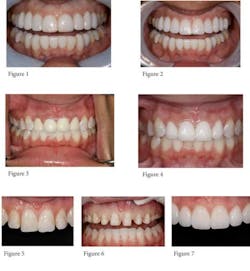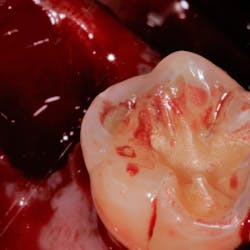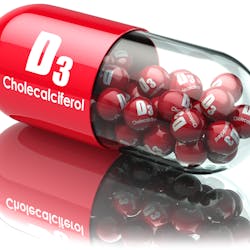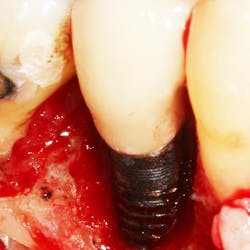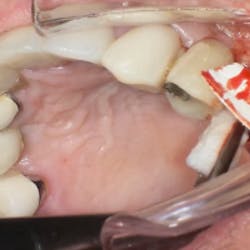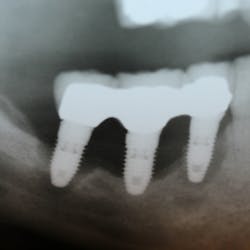By Adamo Notarantonio, DDS
Esthetic considerations of teeth and soft tissue play a major role in the treatment planning of dental care, especially in the restoration of anterior teeth. Most attention is paid to techniques and materials that are available in esthetic restorative dentistry, and less on soft tissue esthetics; i.e., the contours, color, and overall appearance of the gingiva and associated soft tissues. This article will demonstrate a basic approach to soft tissue esthetics, the appearance of the gingiva, and will outline a few soft tissue problems and their management when prepping teeth.
The appearance of the gingival tissues surrounding the teeth plays a critical role in anterior esthetics. Abnormalities in symmetry and contour can significantly affect the harmonious appearance of the natural or prosthetic dentition, but the overall health of the tissue can cause catastrophic results if not controlled properly. Many factors can lead to unhealthy gingival tissue. For example, poor oral hygiene, overbulked margins, and violation of biologic width are just a few. In my opinion, inadequate reduction of tooth structure is the number one reason for functional and esthetic failure in dentistry today. By this I mean simply, underprepped teeth.
With the buzz of “prepless” and minimal prep veneers storming our media, patients are looking for quick, noninvasive ways to give them the smiles they so often see on television. Unfortunately, these cases are few and far between, and when done improperly, they can cause undesirable results to the teeth and soft tissues. In Fig. 1, we see a patient who had 14 “prepless” veneers placed. The lack of preparation of tooth structure caused two problems:
- The ceramist cannot give lifelike esthetics without adequate room.
- Negative soft tissue response resulted in inflammation and recession.
At this time, due to finances, the patient was only able to replace the upper four anterior incisors (Fig. 2). Clearly we can see the improvement in the esthetics of the ceramics, but more importantly, the overall health of the tissue.In Fig. 3, four porcelain-fused-to-metal crowns were placed on teeth Nos. 7 through 10. The unhealthy, grossly inflamed tissue was bothersome to the patient, as spontaneous bleeding was occurring randomly. The crowns were removed revealing that the underlying teeth were barely prepped, resulting in extremely overbulked margins. Fig. 4 displays four new all-ceramic crowns with ideal underlying preparations. The result is excellent esthetics and healthy soft tissue.The final case shows a patient who presented for cosmetic treatment (see Figs. 5, 6, and 7). In order to resolve the patient’s chief complaint, the decision was made to treat Nos. 4 through 13 with indirect porcelain veneers. Due to two previous orthodontic treatments, failed bonding on the facials of her permanent teeth, and a history of smoking, the best result would be obtained with indirect restorations rather than direct bonding. With that in mind, prep design in this case was critical. The need to correct for diastemas, previous restorations, and color issues moved us toward more aggressive preps. This type of prep design allowed the laboratory to correct color issues, idealize natural esthetics, and create proper emergence profiles in every direction. The result, once again, is excellent esthetics and gingival response.As we can see, case selection, treatment planning, and — most importantly — decision making by the practitioner as to preparation design are critical in achieving ideal esthetic results both in regard to ceramics and soft tissue management. That being said, there is a place for prepless or minimally prepped veneers, but careful attention must be paid to the desired outcome so that the proper prep design can indeed yield the proper result.

